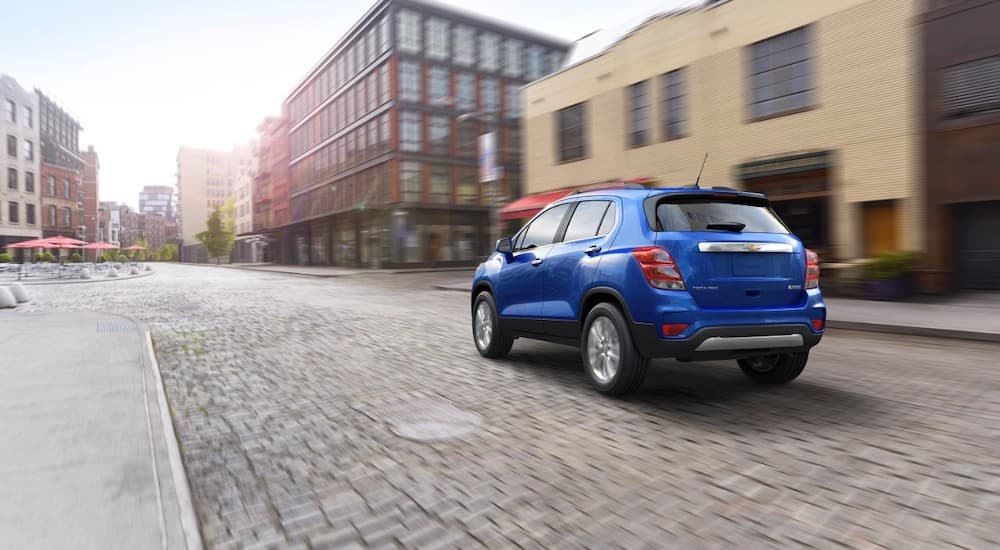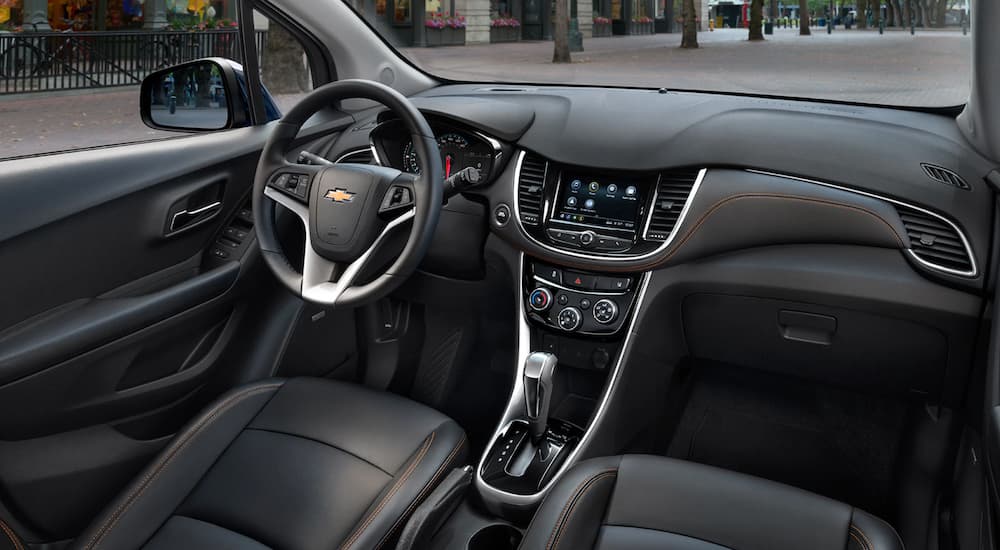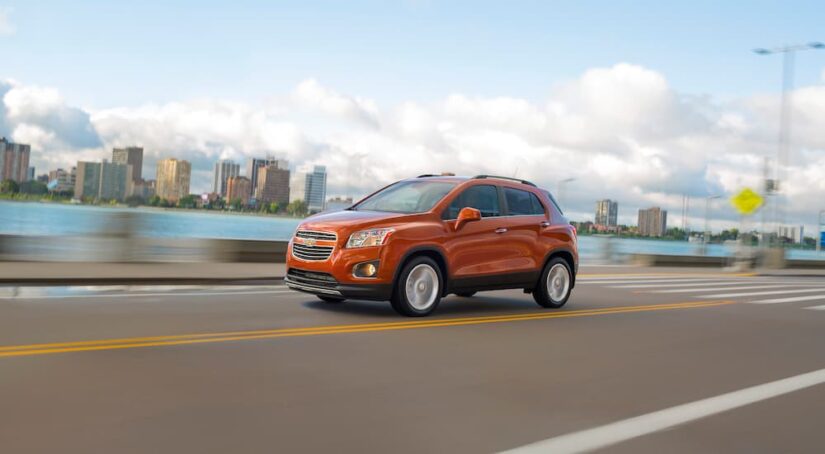The SUV boom has resulted in an almost never-ending cavalcade of makes and models to choose from. The old thought process of “bigger is better” that many brands once relied on has been replaced with a variety of vehicles that are smaller in size and more economical for the average driver. Among these offerings is the Chevy Trax. Affordable and compact, ideal for any driver, and at the time of its debut, the smallest SUV offering from Chevy, it recently made a comeback after a brief absence. For car buyers looking to save money by purchasing a used model, there might be questions about which generation and model years are the best bet. There are a multitude of factors to examine, and if you’re currently looking at a used Chevy Trax for sale as your next potential vehicle, you’ll want to keep reading.
2013–2016: Humble Beginnings
The Chevy Trax debuted for the 2013 model year. The Trax was a departure from the typical SUVs that Chevy had a reputation for producing. The Tahoe, Suburban, and Blazer had all been big in size and storage, and possessed powertrains that were more geared towards performance and towing than economy. These more traditional SUVs were based on Chevy’s truck models, sharing their impressive capabilities, but also their large size and poor fuel economy. The Trax utilized a much smaller 1.4L I-4 engine paired with a six-speed automatic transmission. What it lacked in raw power, it made up for with conservative fuel consumption, which was more than ideal for drivers who called the city home. EPA estimates from the 2016 model year were certainly favorable, as its combined MPG of 29 (24 city, 34 highway) were numbers that paired all too well with the vehicle’s starting MSRP of just over $20,000.
By utilizing depreciation to your full advantage, you can get behind the wheel of a Trax from its first era for an average of 40 percent less than the starting MSRP, making it advantageous for those who have an eye on getting behind the wheel at a low cost. A Trax of this vintage is available in three unique trims with either FWD or AWD.

2017–2019: A New Design with Style in Mind
It’s no secret that the crossover and subcompact SUV market is among the most competitive in the industry. American drivers are known for their penchant for vehicles that allow them to express themselves with style and make a memorable first impression. The 2017 model year saw some stylistic changes in the Trax, which certainly made the vehicle more visually appealing on the outside. There were also some noticeable changes to the inside as well.
The changes included a new front end and narrower LED headlights, which gave the vehicle a more sporty appearance. The 2017 model also saw the inclusion of Apple CarPlay and Android Auto compatibility as standard, which certainly appealed to the modern driver who has an eye for tech-savviness. These were both accessible via a seven-inch infotainment screen and easy to access with minimal distraction while driving. This could be attributed to the elevated seating position, which increased visibility. The new interior had a strong emphasis on comfort, and items were spaced out enough from one another for easy accessibility.
This particular era of the Trax also had an increased focus on safety. The vehicle was awarded a five-star safety rating by the NHTSA in collision testing, and more safety features were included as standard equipment. These included such items as side blind zone alert, rear cross-traffic alert, forward collision warning, and lane departure assistance. A Trax from this era also retains just over 66 percent of its original value, making it an affordable option that checks all of the boxes for the modern driver.
2020–2022: A Swan Song, but Not Gone for Long
It’s been remarked that all good things must come to an end. The final years of the Chevy Trax before it made its recent return might not have any significant changes from the previous years, but certainly offers some additional peace of mind. The biggest advantages that come from this era have more to do with the additional cost-effectiveness attributed to ownership and less to do with the vehicle itself.
The first thing to take into consideration is the average repair costs. This is one expense that every vehicle owner deals with, but the amount varies depending on what they choose to drive. Hypothetically speaking, if you purchased a 2020 Chevy Trax, Your annual repair cost would be less than $550 for the first year of ownership, and the probability of your vehicle needing a major repair would be less than nine percent. These costs would remain relatively low and not eclipse the threshold of $1,000 for another three years.
The other major advantage is finding a Trax from this era that’s a part of Chevy’s CPO (Certified Pre-Owned) program. This gives you all of the advantages of buying a used vehicle, such as lower upfront costs and reduced insurance premiums, while also having the type of coverage reserved for brand-new vehicles. All vehicles that are a part of Chevy’s CPO program are no more than six years old and have less than 75,000 miles on them. They have also been through a rigorous 172-point inspection where all faults have been corrected and replaced with official Chevy parts. You’ll also be given a Carfax report at the time of purchase detailing the vehicle’s history.
Your Trax will also be backed with some excellent warranty coverage that guarantees peace of mind. These include a powertrain warranty that lasts for six years or 100,000 miles and a bumper-to-bumper warranty that lasts for 12 months or 12,000 miles. You’ll also receive two complimentary maintenance visits and 24/7 roadside assistance that lasts as long as the powertrain warranty.

Which Chevy Trax Works Best for You?
Similar to any other major purchase you’ll be making, choosing which version of the Chevy Trax works best for your situation is simply a matter of personal preference. If you’re looking for a vehicle that will have relatively low up-front costs and save you money on your daily commute around town, an early Trax manufactured between the years of 2013 to 2016 might be the best choice. If you’re a car buyer who wants the utmost in quality assurance and plans on making their next purchase a serious long-term investment, a Trax from its last two model years before its reboot is ideal, particularly if you find a model that’s a part of Chevy’s CPO program. If both of these attributes appeal to you, but you’re also looking at something that’s pleasing to the eye, the Trax that was manufactured between 2017 and 2019 will make for an affordable purchase with additional comfort and amenities.
Whichever model year you choose, you’re guaranteed a reliable vehicle that’s practical, stylish, and will provide conservative fuel consumption. When it comes to maintaining a higher standard and producing vehicles that are made with the best interest of the driver in mind, no one does it quite like Chevy.



